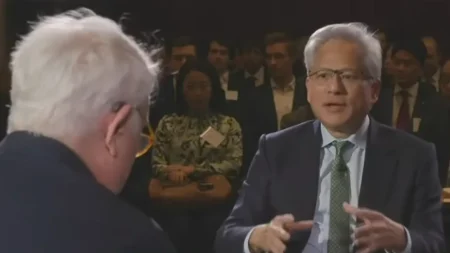Qualcomm isn’t done taking more out of its Snapdragon 888. At Mobile World Congress 2021, the company revealed the Snapdragon 888+, a supercharged version of its current flagship chip. It’s not a ground-up redesign, but do expect a little more muscle for gaming, streaming, and anything else you’re likely to hammer your phone with.
The big change is a CPU overclock; the prime core now runs at 3.0 GHz up from 2.84 GHz on the standard 888. That doesn’t sound like much on paper (because it isn’t), but in mobile silicon, every bit of clock speed counts. Qualcomm has wrung out the last few drops of performance for those users who always tap “Ultra” in the graphics settings.
The other upgrade is under the hood of the AI Engine. Qualcomm claims a 20% boost in AI performance, which results in fast and smart image processing, comfortable video calls, and more responsive voice assistants. Of course, Qualcomm framed it in flashy terms, promising “AI-enhanced entertainment experiences,” but the reality is more efficient handling of all the background tasks modern phones juggle.
Phones Are Already in the Pipeline
Qualcomm says more than 130 devices are in development with either the Snapdragon 888 or 888 Plus. Expect the first Plus-equipped phones to be released in the third quarter of 2021. If history is any guide, ASUS will equip it into a ROG gaming phone first, followed by the usual suspects from Xiaomi, Vivo, and Oppo. Samsung likes to stick to its own Exynos chips outside the US, so don’t bet on the Galaxy S22 being an early adopter.
This announcement also doubled as a coming-out party for Cristiano Amon, Qualcomm’s new CEO. In his Mobile World Congress (MWC) keynote, Amon leaned heavily into the “AI and entertainment” pitch with mentions of gameplay, streaming, and photography. Qualcomm wants you to think of its chips not only as fast, but as central to everything “premium” in Android phones.
Normally, MWC is an event in Barcelona, but like just about everything else post-2020, it’s still a hybrid affair. Qualcomm, Samsung, Google, Ericsson, and other big names are mostly sticking to online keynotes instead of jetting executives to Spain. That hasn’t stopped 5G from being the star topic, though.
Why 5G Still Matters (Even If You Don’t Care Yet)
5G has been “the future” for about five years now, and there’s still no killer app that proves why you need it. But the tech does matter. With speeds up to 100x faster than 4G and very low latency, 5G opens the door to things beyond faster Netflix buffering including telemedicine, VR and AR applications, and actual reliable video conferencing.
Most US flagships already ship with 5G such as millimeter-wave (mmWave) support on Apple’s iPhone 12 lineup. Problem is, mmWave is blisteringly fast but allergic to walls, trees, and distance. Unless you live in a big city or a stadium, you’ll rarely touch it. That hasn’t stopped Verizon from screaming about it in every commercial, while most other carriers around the globe stick to the more dependable mid-band and low-band 5G versions.
Snapdragon 888+ wasn’t Qualcomm’s only announcement. The company also reveals its second-gen 5G RAN small cell technology and a new DU X100 Accelerator Card aimed at network operators. They will make it easy to blanket more places including indoors with mmWave, while also improving private and public 5G networks.
According to Qualcomm, 35 operators and device makers worldwide are on board with mmWave, including players in China, Japan, Korea, Europe, and the Americas. Oppo, for one, is rumored to be prepping its first mmWave phone for release as soon as next year. And China Unicom plans to show the technology at the 2022 Beijing Olympics. So, while mmWave still looks very US-centric, Qualcomm insists the rest of the world is coming along.
Snapdragon 888 Plus isn’t revolutionary, but it doesn’t need to be. It gives Qualcomm’s partners a slightly better specs sheet for late-2021 flagships, with enough CPU and AI tweaks to matter in benchmarks (and also bragging rights). If you pair that with Qualcomm’s ongoing 5G push, particularly mmWave, it’s clear the company wants to position itself as the backbone of premium Android phones and networks alike.







